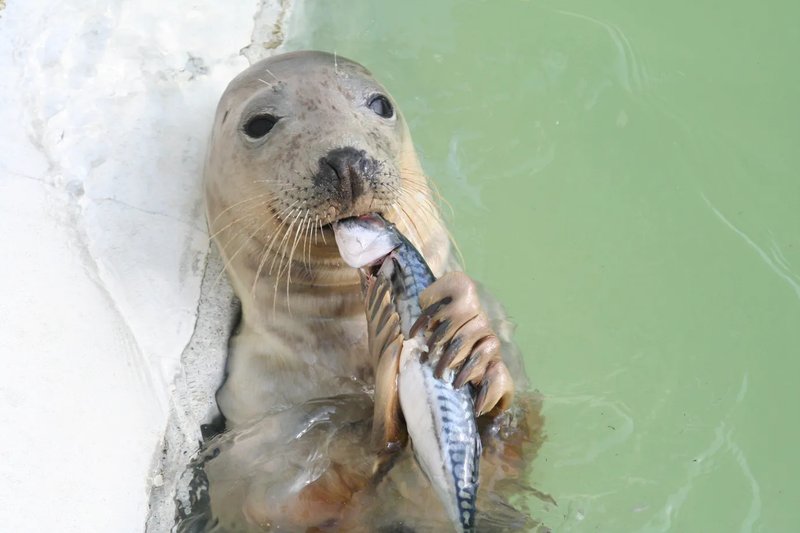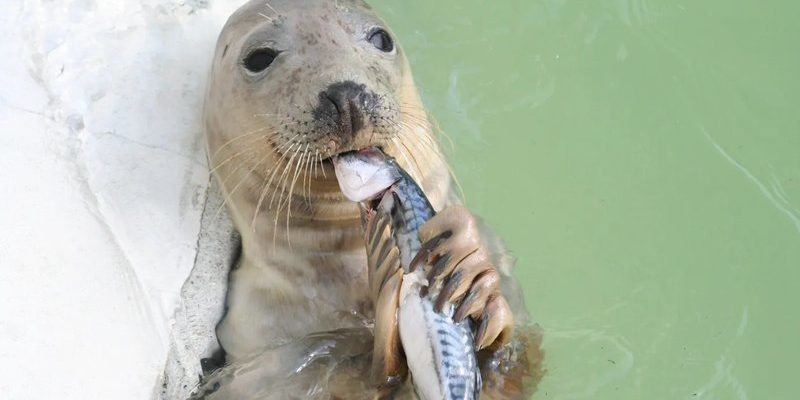
Seals are fascinating creatures, and their feeding habits can be as diverse as their species. For instance, some seals feast on fish, while others might munch on squid or even crustaceans. Let’s dive into the different types of seals and explore what’s on their menu and how they go about catching their meals.
Types of Seals and Their Diets
Seals are generally divided into two main families: phocids (true seals) and otariids (sea lions and fur seals). Each family has its distinct dietary preferences and hunting techniques, which are fascinating to explore.
Phocids: True Seals
True seals, like the harbor seal and the leopard seal, have a very different approach to eating compared to their sea lion cousins. They primarily rely on fish, squid, and occasionally crustaceans. For example, the harbor seal often feasts on herring, capelin, and flatfish, while the leopard seal is known for its predilection for penguins and even other seals!
These seals are typically more solitary when hunting. They use their keen eyesight to spot their prey from a distance. Once they find a school of fish, they’ll dive down and use their speed and agility to catch their food.
Otariids: Sea Lions and Fur Seals
On the other side of the family tree, otariids, such as the California sea lion and the South American fur seal, have a more social approach to feeding. They often hunt in groups, which can improve their success rate. Their diet mainly consists of fish, squid, and even octopus.
Sea lions are known for their playful nature and quick movements. When they hunt, they can dive deep and stay underwater for up to 20 minutes! They also have a knack for diving in a coordinated manner with their buddies, making them quite the sight to see when they’re on the hunt.
The Hunting Techniques of Seals
Let’s take a closer look at how seals catch their food. Their hunting techniques vary based on their environment and the type of prey they’re targeting.
Ambush and Pursuit
Seals often use two primary techniques: ambush and pursuit. Ambush hunters, like leopard seals, tend to lie quietly in wait, using their camouflage to blend into their surroundings. When an unsuspecting penguin or fish swims by, they spring into action.
In contrast, pursuit hunters, such as harbor seals, actively chase their prey. They rely on agility and speed to catch fish, darting back and forth in the water. Can you imagine how exhilarating it must be, racing through the ocean in search of dinner?
Use of Whiskers
Did you know that seals have special sensory whiskers that help them hunt? These whiskers are incredibly sensitive and can detect movements and vibrations in the water, almost like a cat feels the world with its whiskers. This added advantage helps seals pinpoint the location of fish even in murky water.
So, whether they’re lying in wait or pursuing their dinner, seals have some pretty impressive tactics up their sleeves—or fins, I guess!
Feeding Behavior and Patterns
Like many animals, seals have specific feeding behaviors and patterns that depend on the time of year and the availability of food.
Seasonal Eating
Seals often change their diets with the seasons. For instance, during breeding season, you might notice seals gathering in larger groups. This abundance of food can influence their eating habits, as they dive deeper or move to different areas to find what they need.
In winter, when food is scarce, seals might have to travel further or dive deeper than usual, showcasing their adaptability. It’s nature’s way of ensuring that they can survive even when conditions aren’t ideal.
Feeding Frenzy
When a school of fish is spotted, it’s not just one seal that gets excited. Multiple seals may gather, creating a feeding frenzy. This is where you can see them diving, splashing, and catching fish in a whirlwind of activity—almost like a party at the ocean!
These events are essential for young seals to learn hunting skills. Watching older seals helps them figure out the best techniques and strategies. It’s a bit like learning to cook by observing a family member whip up a delicious meal.
The Impact of A Seal’s Diet on the Ecosystem
Understanding the diet of seals isn’t just about knowing what they eat; it’s about recognizing their role in the broader marine ecosystem.
Prey Control
Seals are important for controlling fish populations. By keeping certain species in check, they help maintain a balanced ecosystem. Without seals, some fish populations could explode, leading to an imbalance that might harm other marine life.
Indicator Species
Seals are also considered indicator species, meaning their health reflects the overall health of the marine environment. If seals are thriving, it’s a good sign. But if their numbers drop or they show signs of malnutrition, it could indicate problems below the surface—like overfishing or habitat destruction.
Keeping an eye on seal diets helps scientists understand changes in the ocean and signals us to take action.
Human Impacts on Seal Diets
It’s essential to consider how human activities affect seals and their diets.
Overfishing
One of the biggest threats to seals is overfishing. As humans catch large amounts of fish, seals may find it harder to get enough food. This competition can lead to malnutrition or even starvation, which is tragic for these beautiful creatures.
Pollution
Pollution in the oceans is another major concern. Chemicals can accumulate in the bodies of seals and impact their health. From toxins to plastic waste, these harmful substances can affect not just seals but the entire food chain.
We often forget that our actions can ripple through the ocean, affecting the animals that call it home.
Conservation and Protection Efforts
Helping seals thrive requires effort. Thankfully, there are many conservation initiatives dedicated to studying and protecting these amazing animals.
Protected Areas
Many regions establish marine protected areas to safeguard seal habitats. These areas limit fishing and other human activities to help maintain healthy ecosystems. It’s like creating a safe space for seals so they can find food and breed without stress.
Public Awareness
Educating the public about seal diets and their significance is crucial. When people understand the challenges seals face, they are more likely to support conservation efforts.
From educational programs to animal sanctuaries, every bit helps. You might even consider volunteering or supporting local organizations dedicated to marine life.
In conclusion, the diet and feeding habits of seals reveal much about their intelligence and adaptability. Understanding how they hunt, what they eat, and the challenges they face allows us to appreciate and protect these remarkable animals. The next time you think of seals, remember that there’s so much more beneath the surface of their charming appearances.

